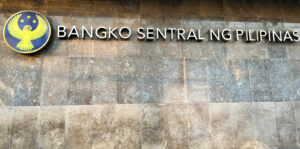Building the bridge towards digital inclusion

By Bjorn Biel M. Beltran, Special Features and Content Assistant Editor, BusinessWorld
The benefits of the digital age need no more preaching. They are obvious to anyone living in any major city anywhere in the world. It is an understatement to say that technology — particularly the internet — has completely changed modern life.
But not for everyone. The United Nations Development Programme put it best: “Digital technology is advancing at an incredibly rapid pace all over the world — but it’s not happening evenly. Around 60 percent of the world’s population is now online, but most of those people are in developed countries. In less-developed countries, only one in five people are online.”
“This matters because education, work, and public services are increasingly reliant on digital access. Lack of connectivity therefore is a growing impediment to human development,” Robert Opp, chief digital officer of the UNDP, wrote.
In the Philippines, the digital divide is easily seen in data. According to “DataReportal’s Digital 2023 Report,” there were 85.16 million internet users in the Philippines recorded at the start of 2023, putting internet penetration at 73.1%.
The Department of Information and Communications Technology (DICT) in June puts the number higher at around 83%, but admits that many of such internet users have only a shallow relationship with the technology.
“The Philippines is already — I think, in five or six successive surveys, global surveys — first in terms of use of internet. The world average is only around six hours (of internet use daily). In the Philippines, we have more than 10 hours exposure,” DICT Undersecretary Jocelle Batapa-Sigue had said.
“The global average use of internet for social media is two to three hours only. But in the Philippines, it is four to five hours, it is double. There are many countries with strong internet, and many users of the internet. But they use it for productive means, for learning, for employment, for building new enterprises, for government transactions,” she said.
Ms. Sigue pointed out that this highlights a key problem with the digital divide: “It is not only about connectivity. The digital divide is also caused by digital gap in terms of skills. We need to really emphasize on digital skilling, especially in the countryside.”
Closing the ‘digital divide’
Clearly, addressing the digital divide needs both addressing the lack of accessible means by which many Filipinos can utilize the internet, and the lack of digital literacy to navigate the continuously changing internet landscape — a daunting task for the government alone.
The Bankers Institute of the Philippines (BAIPHIL) is committed to helping the government with this goal, as they celebrate the start of Fiscal Year 2023-2024 with the theme “Bridging the Digital Gap in Financial Services.”
“Though it’s true that the pandemic accelerated the digital transformation of the country, the pandemic made it more pronounced, more obvious, this big gap. For many students, they may not be able to complete assignments because they do not have computers or access to the internet. For employees, they may not be able to work remotely due to connectivity issues; they may not have access to information on job opportunities. For many seniors, they cannot access online medical consultations because of this digital divide reinforcing socioeconomic inequality,” Ms. Racquel B. Mañago, president of BAIPHIL, said in an interview.
“The goal is to close that gap, or at least minimize the gap or divide. The ultimate goal is for digital financial inclusion which is possible when we bring technology and digital know-how to everyone so no one is left behind.”
She said that BAIPHIL, as an organization comprised of the country’s most prestigious financial institutions and respectable bankers, can help push the digital agenda, both among the financial industry and outside of it.
“Digitalization will make the banking industry more competitive. Innovation will drive efficiencies and bring about wider reach. Digitalization is imminent and BAIPHIL is here to help,” she said.
Part of this effort is by promoting the BSP’s initiatives relative to the Digital Payments Transformation Roadmap. In its biennial convention held last March 11, BAIPHIL in partnership with Philippine Payments Management, Inc. (PPMI) awarded the 2022 Bank Champions in Digital Payments & Financial Inclusion Initiatives; namely: Grand Champion — Rizal Commercial Banking Corp., 1st Runner-Up — Land Bank of the Philippines, and 2nd Runner-Up — Robinsons Bank Corp.
BAIPHIL recognizes that collaboration is essential in bridging the digital gap. The organization actively engages with various stakeholders, including government agencies, financial institutions, and technology providers, to foster a collaborative environment.
Such an initiative is through the various financial literacy programs the organization is running in partnership with the BSP to educate parents of elementary school children and their teachers about financial literacy. BAIPHIL also partners with Rags2Riches, Inc. to train artisans who are mostly women from Payatas.
BAIPHIL’s financial literacy programs are open to members of LGUs and senior citizens as well. The organization plans to offer digital financial literacy programs as a supplement to teach Filipinos the skills needed to navigate financial services with the skills to use digital technologies.
As part of its corporate social responsibility advocacies, BAIPHIL has in the past donated old computers and solicited donations to purchase computers for schools. BAIPHIL is looking to do something similar.
In addition to helping bankers and consumers make sense of the currently evolving financial landscape, Ms. Mañago also underscored their efforts at promoting the security of the country’s digital financial system.
What is now known as the Bankers Institute of the Philippines, Inc. (BAIPHIL) was established in 1941 as a non-stock, non-profit corporation with the primary objective of enhancing efficiency and uniformity in bank accounting, auditing, and operations among banks.
The Institute has grown from a modest group of primarily accountants and auditors into a prestigious and respected institution for bankers. It now has 71 institutional members, including universal, commercial, and thrift banks, as well as organizations involved in the banking industry.
It currently boasts more than 250 prominent executives who actively contribute to its different projects as associates and sustaining life members.
Throughout eight decades of its existence, the institute continuously pursues its purpose of assisting banks in increasing productivity through research, information exchange, and education programs.
Spotlight is BusinessWorld’s sponsored section that allows advertisers to amplify their brand and connect with BusinessWorld’s audience by enabling them to publish their stories directly on the BusinessWorld website. For more information, send an email to online@bworldonline.com.
Join us on Viber at https://bit.ly/3hv6bLA to get more updates and subscribe to BusinessWorld’s titles and get exclusive content through www.bworld-x.com.




